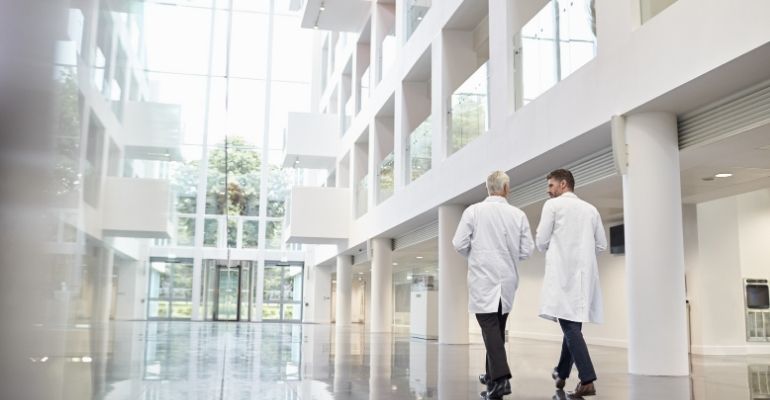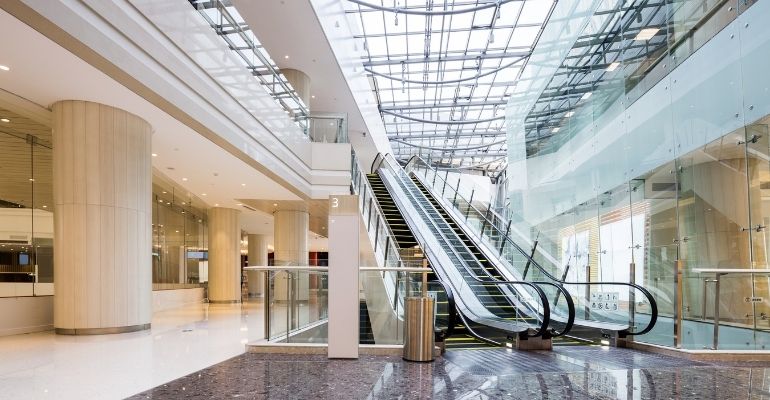As the world is slowly adapting to a new way of life and incorporates strict social distancing measures, industry players across all sectors are laying the groundwork for a new world of changed perceptions and altered priorities.
The pandemic has unveiled and accelerated trends that will have a lasting impact on the built environment and architecture as we know it. With healthcare, housing and the economy all top priorities, the focus turns to design for recovery and resilience more so than just form and function. Looking beyond reactionary measures, we have a responsibility to build on the immediate crisis response and use the path cleared by the pandemic to create dynamic urban solutions, regenerative designs and ecological systems that contribute to the greater good.
From optimising operations to keeping people safe, CRTKL reveals the key holistic and adaptable innovations and interventions emerging in the post-COVID world for the residential, healthcare, retail and hospitality sectors.
THE RESIDENTIAL SECTOR:
Despite short-term operational changes including the temporary closure of some amenity spaces, increased sanitisation, and a scaling back of physical community events in favour of virtual initiatives, the pandemic has had little effect on the long-term aspiration for multi-residential. Rather it has reminded residents that the home is so much more than just a place to sleep, shower and store.
The home has grown to become an office, a gym, a theatre, a restaurant and more, with the demands now being placed on it far greater and more diverse than they were pre-lockdown. The experience has made occupants view living and dining rooms with greater appreciation. Seen for their potential to double as workspaces, these spaces are also being used more for their intended purpose as the act of gathering for a meal returns to tradition with no traffic or commute stopping individuals from making it home for dinner. Kitchen size and fit out is not so easily compromised when most meals are now being had at home either and the kitchen bench is moonlighting as a classroom. Likewise, meaningful size balconies and communal, external terraces have also become non-negotiable, with access to nature and biophilic design becoming key differentiating factors for buyers and renters alike.
What residents want in terms of amenities is also changing. Where once there might have been a cinema room, in future it will be a printing room complete with stationary cupboard as working from home becomes the norm. The communal dining room will double as a virtual board room. The concierge will offer IT support services, while phone booths might pop up along apartment corridors to allow meetings and video calls to be taken privately without interference from a spouse, child or housemate. Flexibility will also be key, with adaptive spaces that can change by the hour – yoga studio in the morning, co-working space at lunch, and pop-up bar at night.

THE HEALTHCARE SECTOR:
Hospitals in the Middle East have long been under pressure to provide the highest quality service for patients who seek access to exceptional healthcare. Now, when faced with the COVID-19 pandemic, hospitals are now experiencing further pressures of testing and caring for an influx of patients with known or suspected COVID-19, as well as protecting and keeping staff on the frontline safe.
Architects and planners work closely with clinical leadership to plan for disaster, designing spaces and managing operational flows for forwarding triage ahead of the emergency department. Spaces are used creatively within hospitals to serve as patient care spaces while activating and bringing spaces online as part of the local hospital team. Designers also look for solutions such as the adaptive reuse of other buildings to solve the problem if patient volumes exceed the capacity of current facilities – the height of the pandemic saw many hotels and entertainment spaces temporarily converted into healthcare facilities.

THE RETAIL SECTOR:
The focus is now on human behavior, not consumer behavior, and for retail environments, this means shifting from transactional encounters to meaningful interactions and experiences. The humble store is evolving from a place where you merely buy something, to a gateway for discovery, with the store becoming a way to access the latest releases, exclusive offers and more personalised service.
With this, the world says goodbye to fixed structures bound by long leases and embrace a more fluid definition of retail. Pop-ups and retail residencies with modular stores and seasonal rotations are on the rise. An effective way to mitigate risk and remain agile in an unstable climate, these initiatives allow brands to combat consumer fatigue, create partnerships, and maintain engagement with timelier offerings.
Many of the modern applications brought forward by the pandemic such as flexible, single-story, permeable structures that accommodate social distancing guidelines and offer multiple circulation paths are also on the rise. Outdoor, mixed-use and drive-through shopping experiences continue to grow in popularity, while new technology offers more ways to enhance store formats. Tech-enabled stores are improving service models and removing points of friction, whether by having outfits in your size ready and waiting for you when you walk in or allowing you to click and collect via a vending machine-style interface. These advancements not only streamline operations, they provide a complete shopping ecosystem that links an online store to the physical one.

THE HOSPITALITY SECTOR:
What typically sets apart world-class hospitality is the influence of design within the property, the technological innovations that enhance the guest experience and the service provided by the staff. These factors have been compromised by the pandemic and it is the architect and designer’s role to study this and overcome it with strategies that reprioritise space and create memorable experiences, which both protect the health and safety of the guests and deliver a commercial return for owners and operators.
There is still no one-size-fits-all solution, and due to the nature of the pandemic, the situation is still evolving day-by-day. Many are still optimistic that there will be a return to ‘normal’ operations and are planning for a future with a vaccine. In the short-term, the focus is on cleanliness and other temporary measures that instill confidence in guests that they can travel and stay in comfort and safety.
Hotel developers and operators may also use this quieter period to plan and tender for new projects; taking advantage of declining construction costs as firms seek to secure new business. Local authorities may also view planning applications more favourably for their ability to bring energy and economic prosperity to the region.
All about creativity and empathy, with minds being occupied by anxiety and survival, lateral thinkers with higher developed empathetic traits are required to work across all aspects of life.
Recommended Podcast: Architecture: Taking on the challenges of designing during a pandemic
WANT MORE REAL ESTATE INSIGHT?
Subscribe to the Cityscape newsletter here

